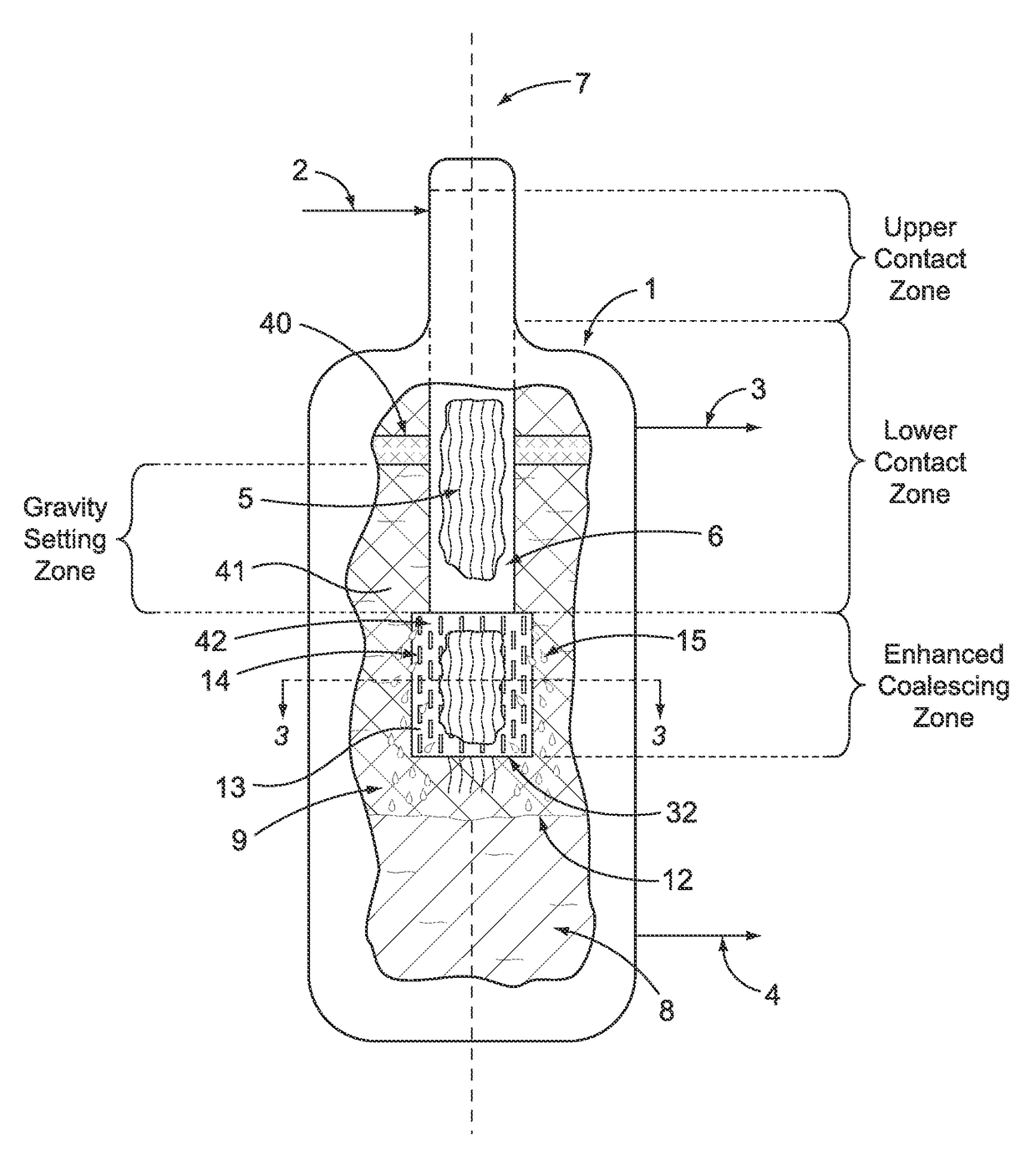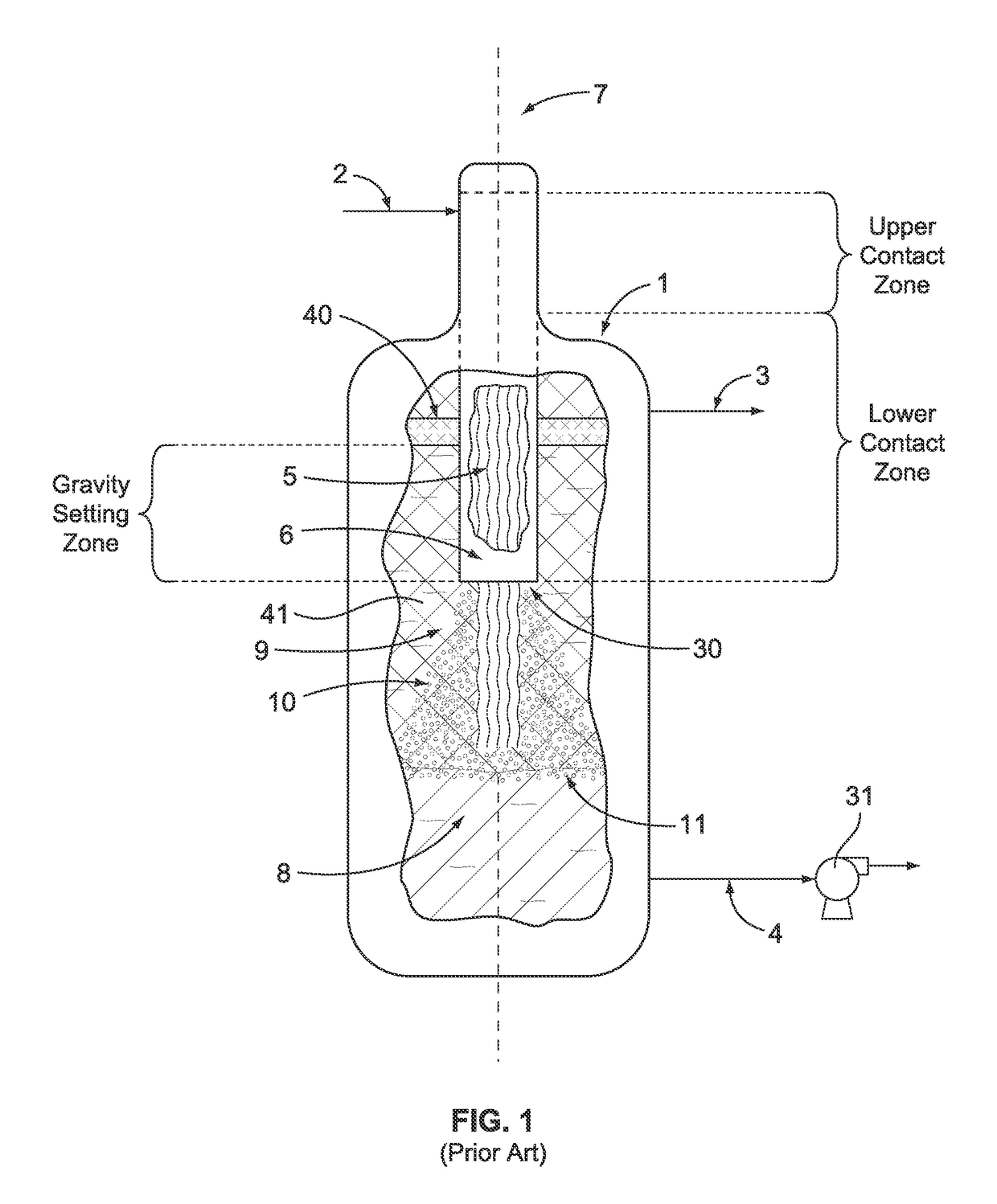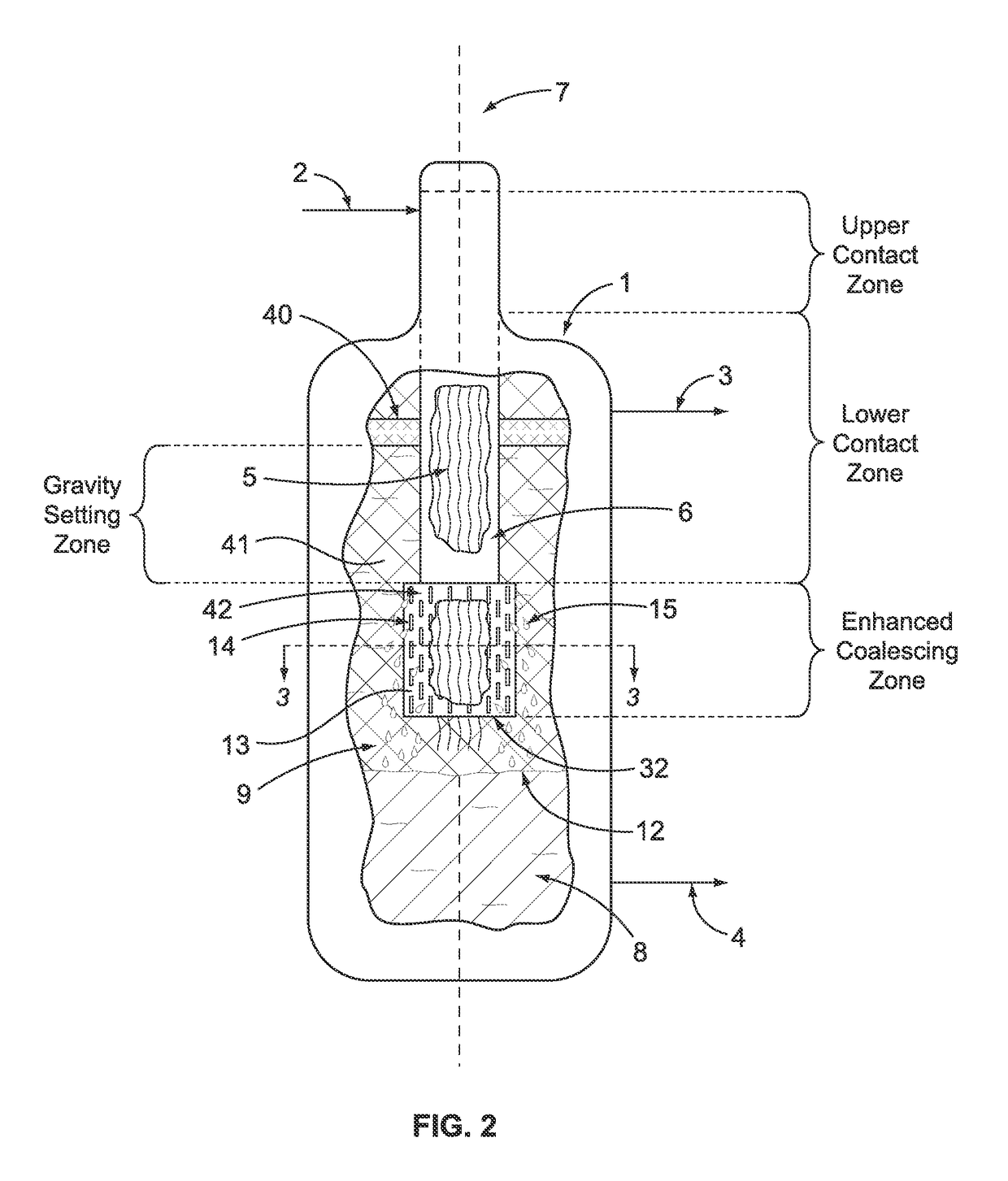Contactor and separation apparatus and process of using same
a technology of separation apparatus and contactor, which is applied in the direction of separation process, chemistry apparatus and process, liquid solution solvent extraction, etc., can solve the problems of poor separation, high dispersion, and formation of emulsions, and achieve the effect of reducing the number of spherical particles
- Summary
- Abstract
- Description
- Claims
- Application Information
AI Technical Summary
Benefits of technology
Problems solved by technology
Method used
Image
Examples
Embodiment Construction
[0034]A comparison of the instant invention with an apparatus and process known in the art is helpful in understanding the improvements in our invention. To that end, FIG. 1 illustrates a prior art process and apparatus for use in a process that uses catalytic oxidation of reactants that results in the formation of an admixture comprising at least two immiscible liquids. The reactants are fed to the process and introduced to vertical vessel 1 through inlet process line 2 where the reactants contact the uppermost portion of a plurality or bundle of hanging fibers 5 that define a vertical axis 7. Notably, vertical vessel 1 does not have a large horizontal section located below the hanging fibers. Preferably the reactants pass through a liquid distributor (not shown) that is positioned at the top of the bundle of fibers. The hanging fibers 5 are contained within a shroud 6 that forces the admixture of liquids to flow parallel to the vertical axis and to contact the hanging fibers. The ...
PUM
| Property | Measurement | Unit |
|---|---|---|
| density | aaaaa | aaaaa |
| density | aaaaa | aaaaa |
| boiling points | aaaaa | aaaaa |
Abstract
Description
Claims
Application Information
 Login to View More
Login to View More - R&D
- Intellectual Property
- Life Sciences
- Materials
- Tech Scout
- Unparalleled Data Quality
- Higher Quality Content
- 60% Fewer Hallucinations
Browse by: Latest US Patents, China's latest patents, Technical Efficacy Thesaurus, Application Domain, Technology Topic, Popular Technical Reports.
© 2025 PatSnap. All rights reserved.Legal|Privacy policy|Modern Slavery Act Transparency Statement|Sitemap|About US| Contact US: help@patsnap.com



